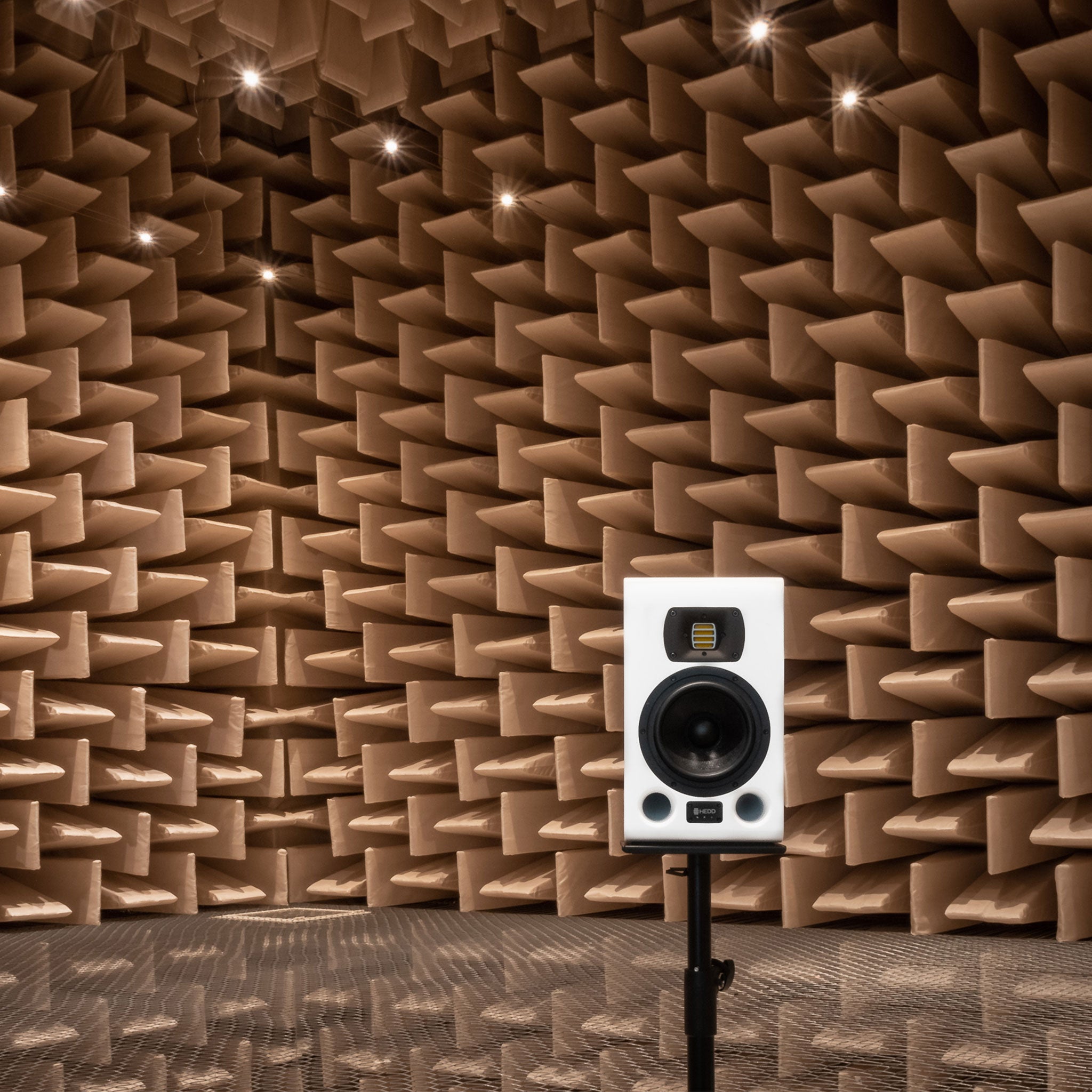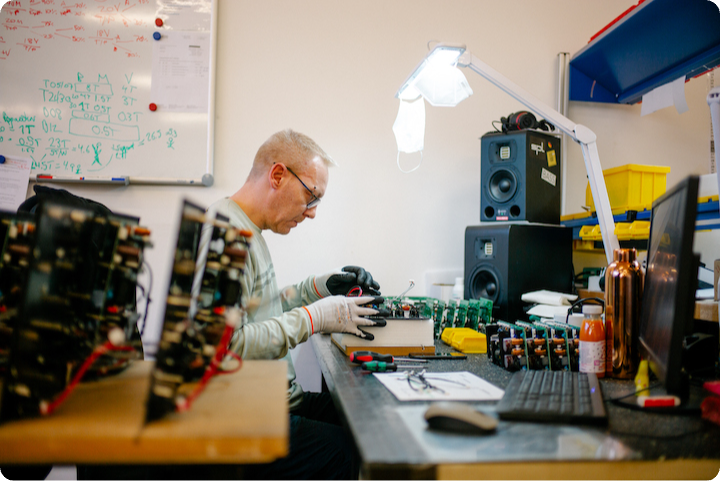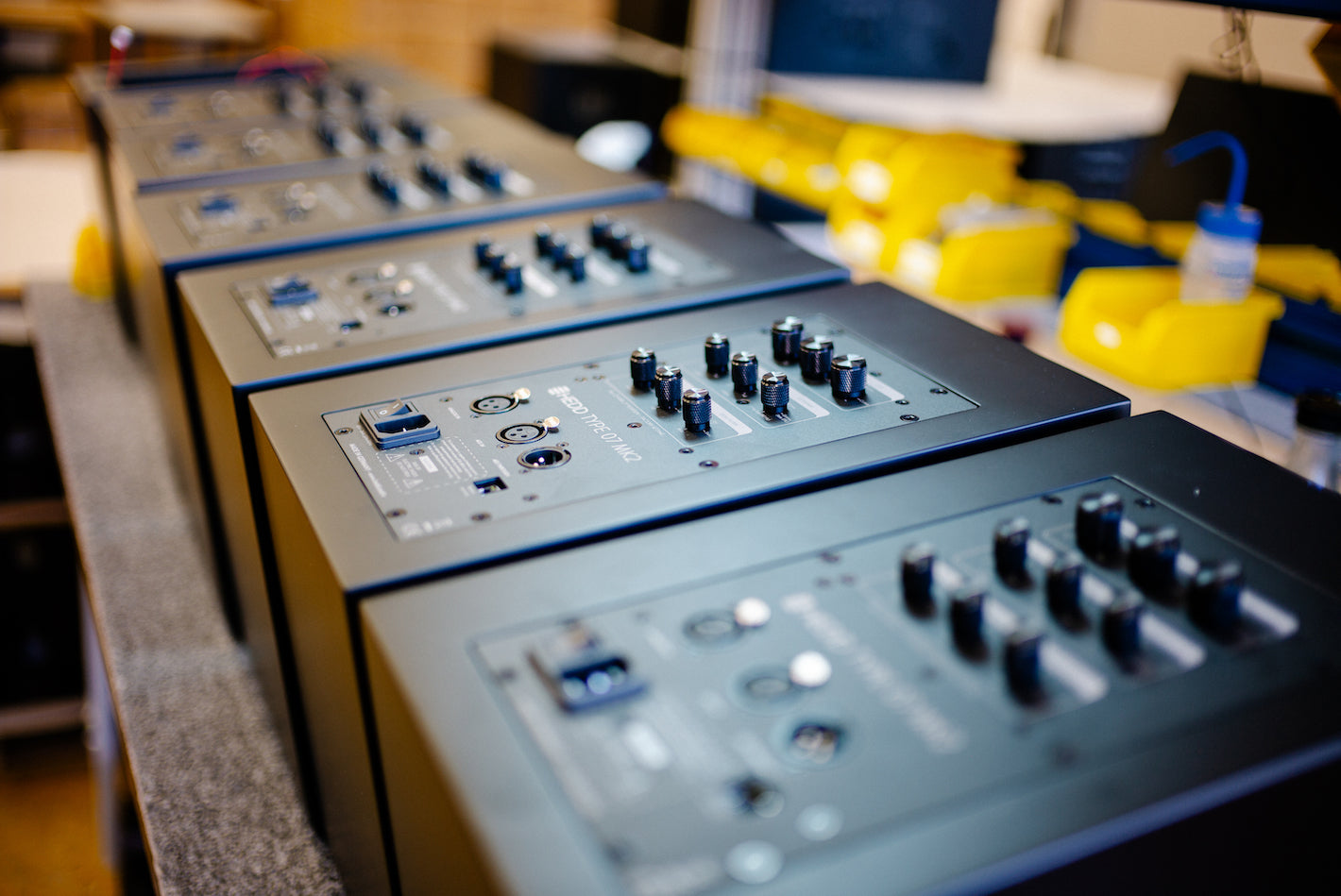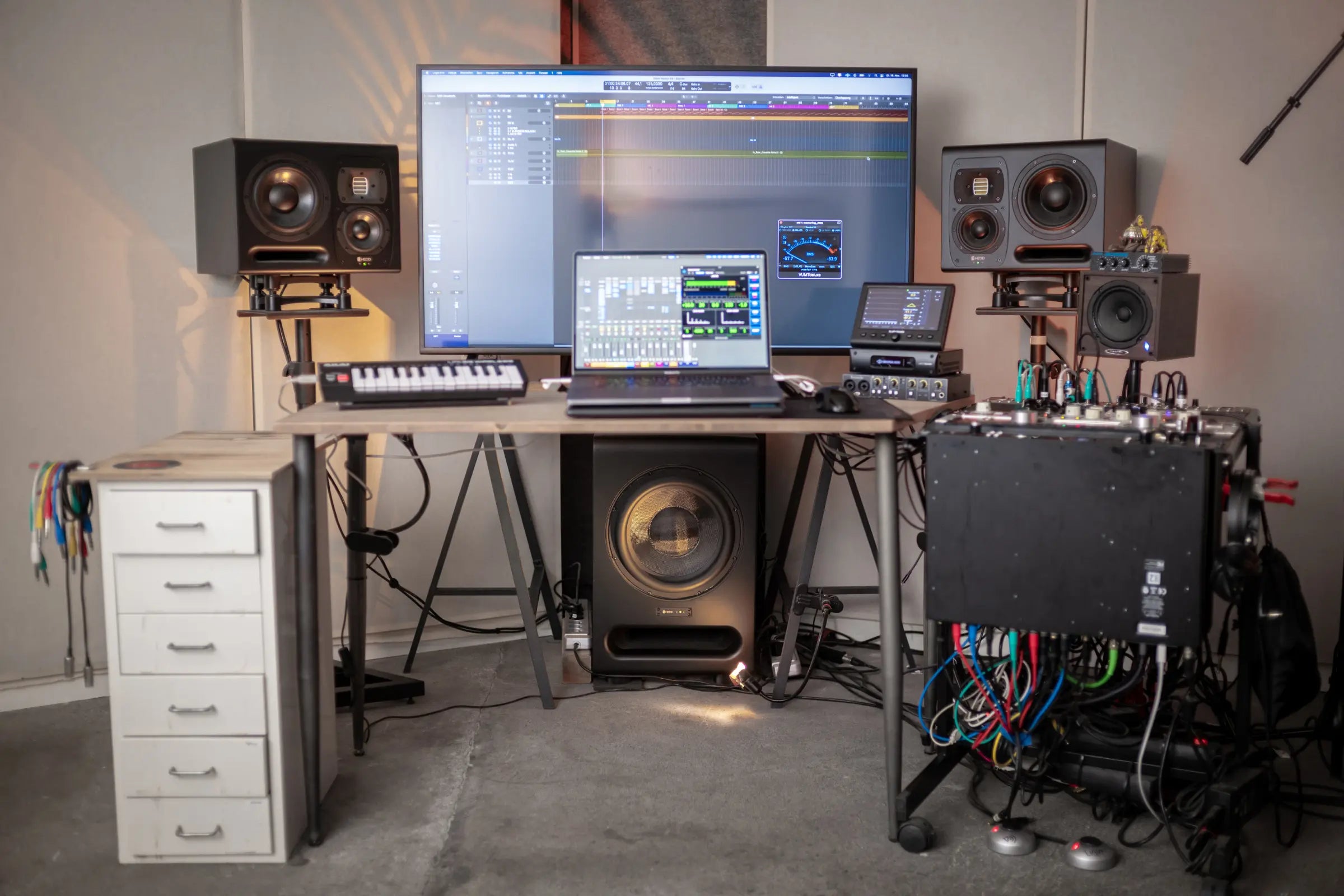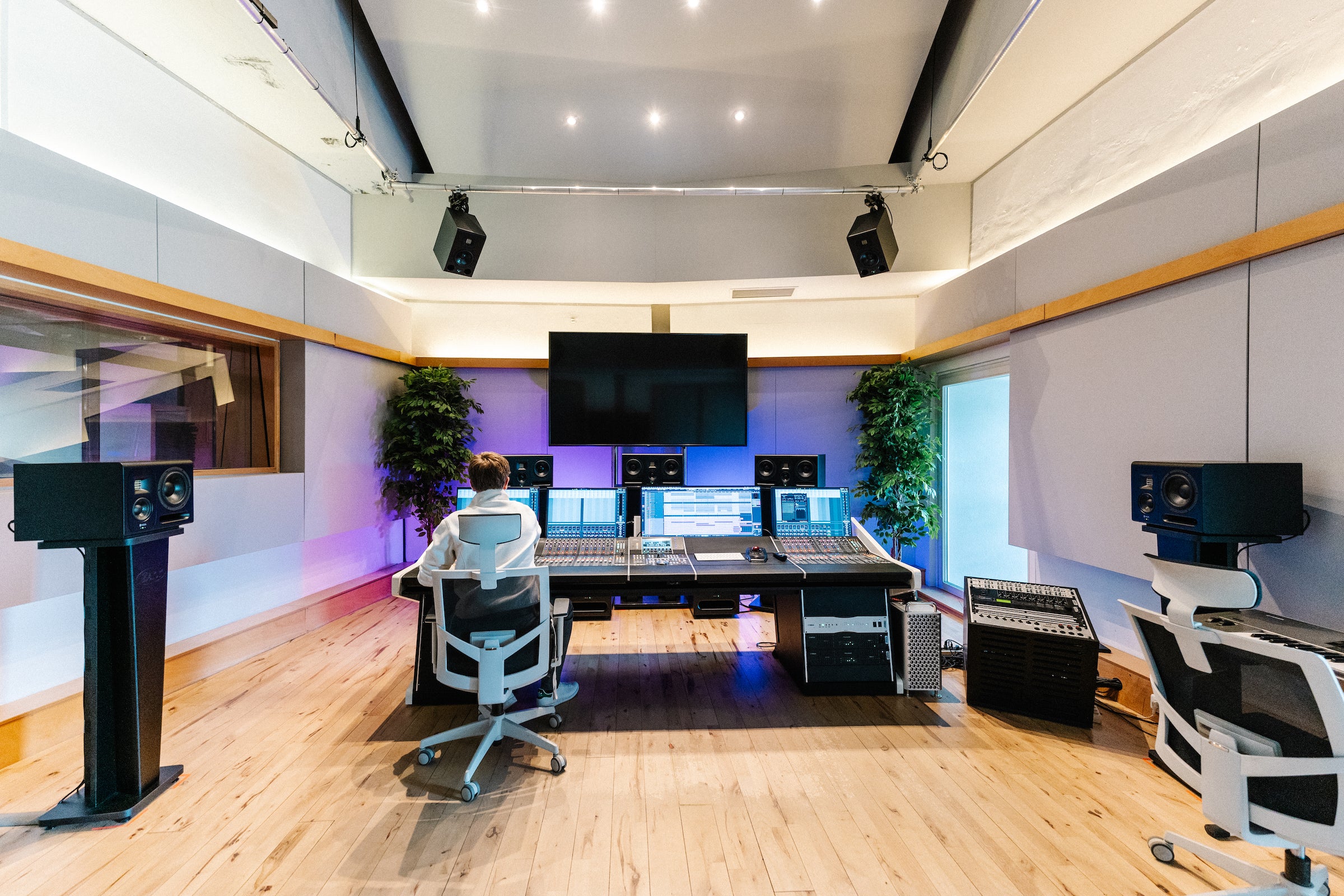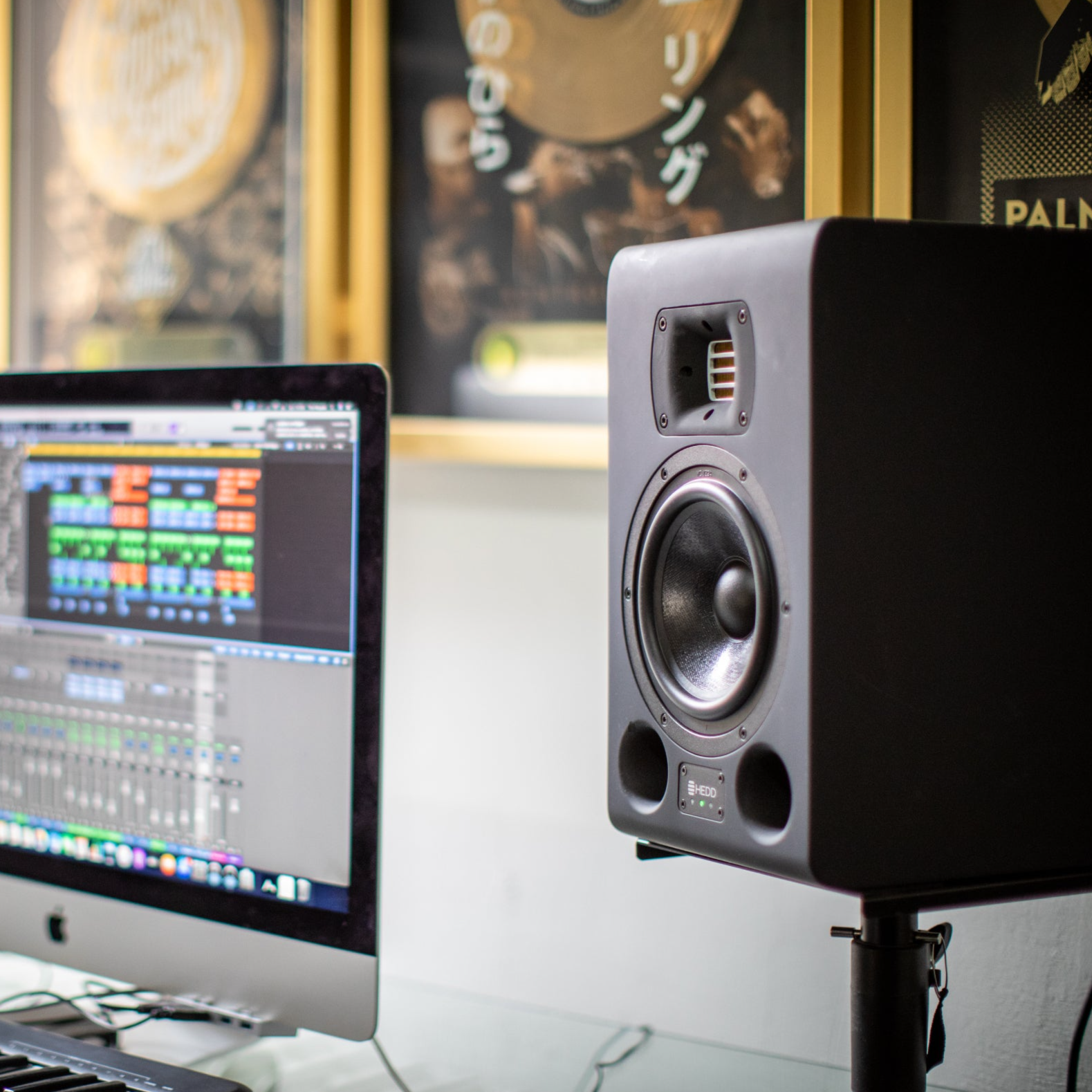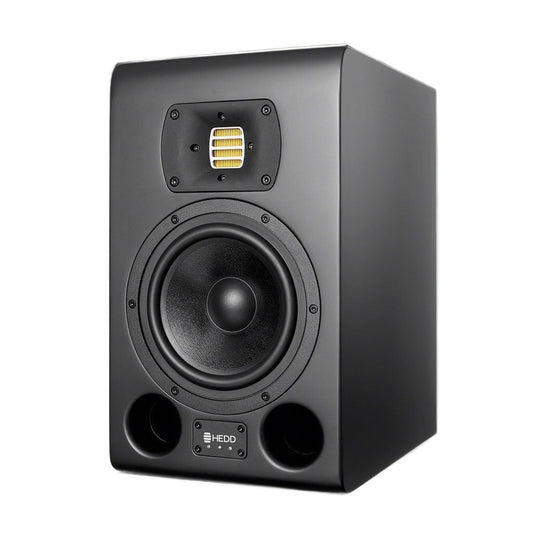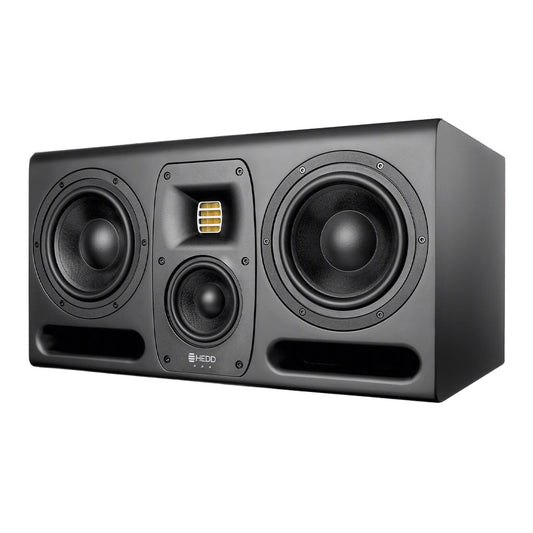The HEDD Lineariser: 'A Brief History of Time'
The HEDD MK2 range of monitors and subwoofers all feature a custom, high-end SHARC Digital Signal Processor (DSP) running at 32bit resolution. This DSP allows our monitors and subwoofers to build upon analogue foundations with digital innovations so that you can tune them to your needs.
At the heart of the DSP innovations in the HEDD MK2 range is a tool we call the Lineariser: a high-resolution, zero-phase filter designed to eliminate time delays. While most DSP-enabled monitors today allow you to correct amplitude, they do not always give you control over phase response, which is the difference between frequencies and the time it takes for them to travel through a monitor cabinet. Using the Lineariser, HEDD MK2 monitors can automatically align this difference, or phase response, and do so without you needing to take any measurements or handle complicated calculations.
We believe that thanks to the Lineariser, the MK2 range surpasses the usual analog speaker limitations and unlocks new levels of resolution, separation, and stereo imaging accuracy.
Controlling Phase Behaviour with FIR Filters
An inevitable but unwanted aspect of analogue speaker design is that nothing can be done to control or remove the phase response, that is the time difference between how long it takes for different frequencies to travel through the unit. No matter what is done, we cannot influence the frequency response of speakers without changing their phase response and vice versa. To deliver both linear frequency and phase response together is not possible in the analogue world. However, the introduction of DSPs in recent decades finally gave a potential solution to this problem with the emergence of Finite Impulse Response (FIR) filters, also known as linear phase filters.
FIR filters allow for control of the phase behaviour in a monitor independent of its frequency response, something that more traditional filters used in DSPs such as Infinite Impulse Response (IIR) filters cannot do. As such, FIR filters make it possible to correct the phase response of a monitor unit, be it a satellite or subwoofer, and align the output of all its frequencies in time, which has made it an essential filter type for DSP-powered monitors today.
In order to control linear frequency and phase response, FIR filters allow for the storing of parts of the signal until everything is in the timely order needed before sending to the output. The price to be paid for this linear phase response is a delay in the overall signal, with practical numbers between two and 500 milliseconds, depending on various parameters. This is no problem in a pure reproduction chain, but may cause issues in a recording situation which is why FIR filters are best used in specific studio situations.
The difference in time behaviour FIR filters provide can be measured under specific technical tests and we believe that these technical improvements translate into the listening experience, especially when it comes to the perception of the stereo field and the details it contains.
The Lineariser: Better Sonic Accuracy
The innovation afforded by FIR filters was what convinced us to integrate DSPs into our MK2 range of monitors .
Our DSPs are powered by a SHARC processor, an industry standard, and they provide various key functionalities, many of which are common across professional monitors today, including: three desktop and two shelving filters, to adjust the monitors to your space ; bass extension for extra low frequency punch; and digital AES and analog XLR connections.
But the jewel in the DSP-enabled functionalities of our MK2 monitors is the Lineariser, an optional FIR filter that allows users to control the linear phase response of their monitor to create better stereo image and sonic depth. The Lineariser allows users to flatten the speaker phase so that the exact timely relationships of the incoming signal are reproduced, which as noted above comes at the cost of a small delay in the overall signal which should not be an issue in pure reproduction chains.
To do this we recorded the impulse responses of every HEDD MK2 model in the anechoic chamber of the Technical University Berlin, allowing us to correctly assess the frequency delays occurring within the speaker. Those impulse responses are then coded into the Lineariser so that when a user enables it the FIR filter can correctly apply the necessary delays to align phase and frequency responses.
We often think of what the Lineariser does as akin to lifting a curtain over the audio signal. It helps tighten the audio signal and it improves the localisation of objects and panning information. When it comes to transient-rich audio material, the Lineariser will provide you with a stunning, more accurate sonic experience.
Better Sound in Sat-Sub Setups
Phase response can also cause issues when running a satellite and subwoofer system, often leading to smearing in the sound and sense of disorientation that are inherent in the use of subwoofers.
To help users achieve true sound integration and system-wide phase linearity between our MK2 monitors and BASS subwoofers , we have combined the Lineariser with a Group Delay Compensation tool.
We have added an additional two DSP channels in the backplates of the BASS 08 and 12 subwoofers, which add a 40ms group delay to the analog XLR sockets used to connect subs and satellites. When enabled, satellites will ‘wait’ 40ms for the subwoofer to emit its lower frequency signals and then, if the Lineariser is enabled, add their own group delay of 10ms in order to ensure that all units in the system start reproduction of the different frequencies in the audio signal at the same time, down to the very millisecond.
An additional difficulty in Sat-Sub systems is introduced by the distance between the different units. The benefits of Group Delay Compensation and the Lineariser work with equal distances between units, something that is not always possible. To help you deal with this we’ve added a distance control in the backplate of subwoofers that lets you compensate for the potential difference in travelling time between satellites and subwoofers. This control lets you add ± 2m runtime difference between satellites and subwoofers in a .5 m resolution, which should cover any distance-related problems in most use cases.
By combining the Lineariser and Group Delay Compensation you can remove the standard problems inherent in the use of subwoofers and be confident that all elements of your audio reproduction chain start at the same point in time, and do so with the timely correct relationships within the audible band found in the incoming music signal.
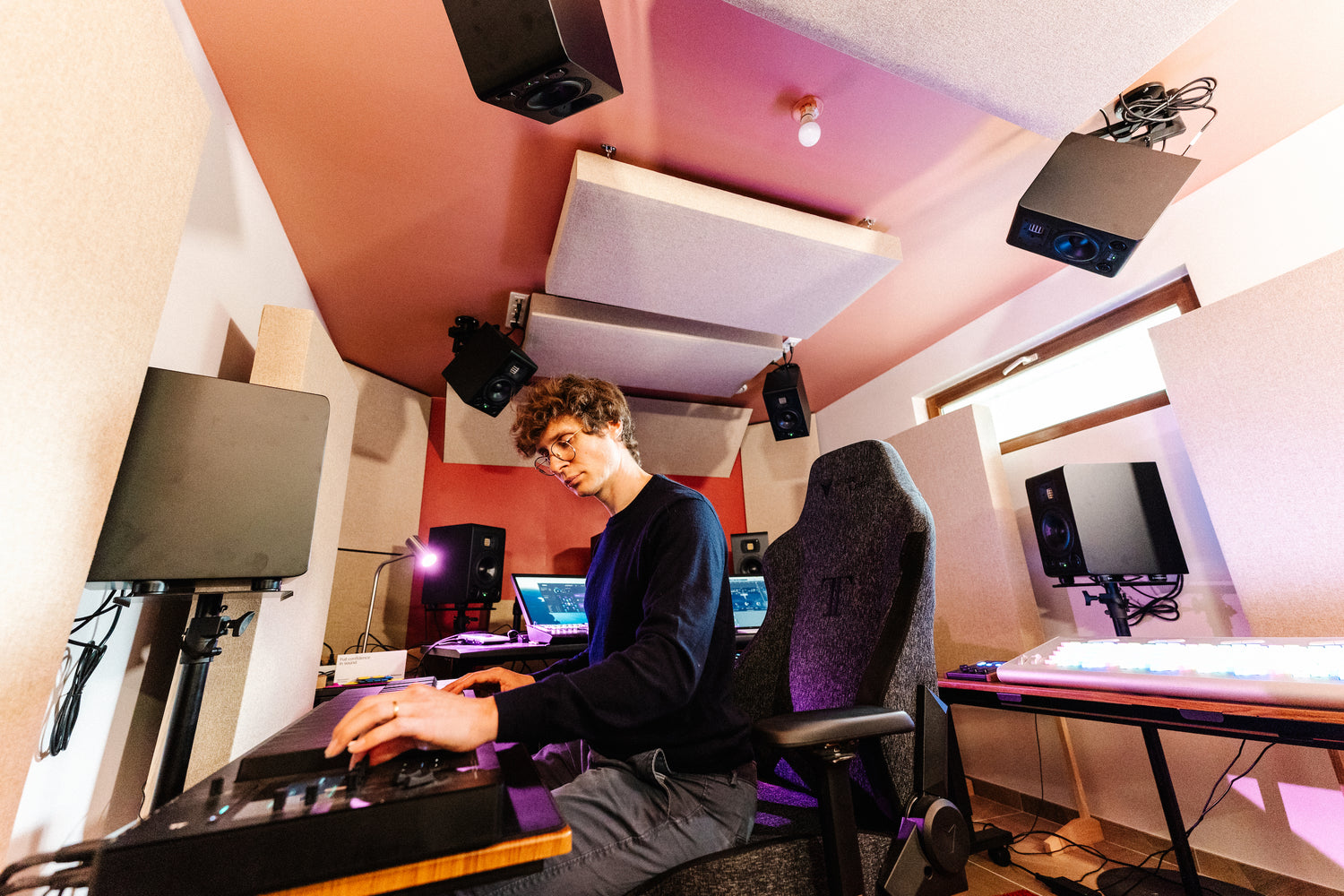
Need Help With Room Acoustics?
Check out our guide with Acoustics Insider's Jesco Lohan on the basics of how to treat a room and deal with its sonic specificities, including speaker placement, referencing, and studio furniture.


